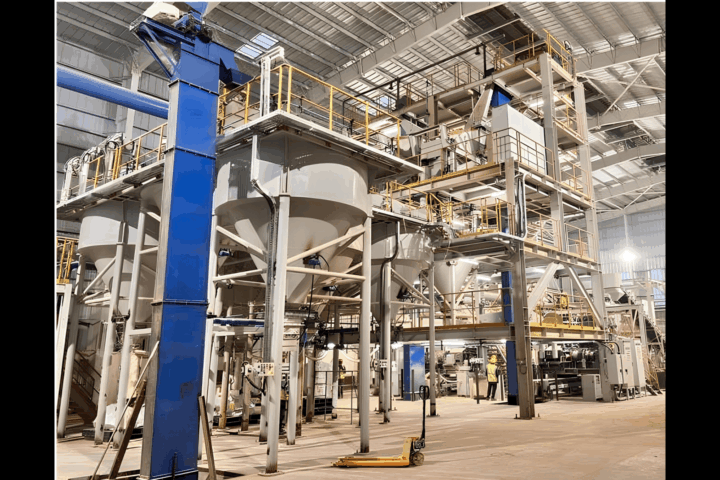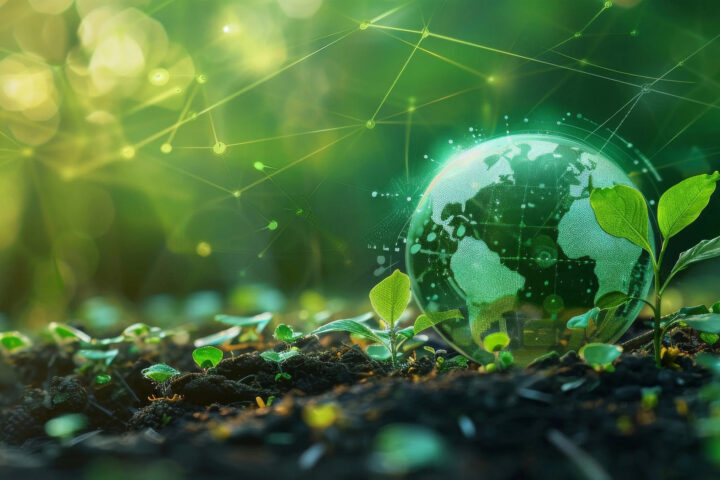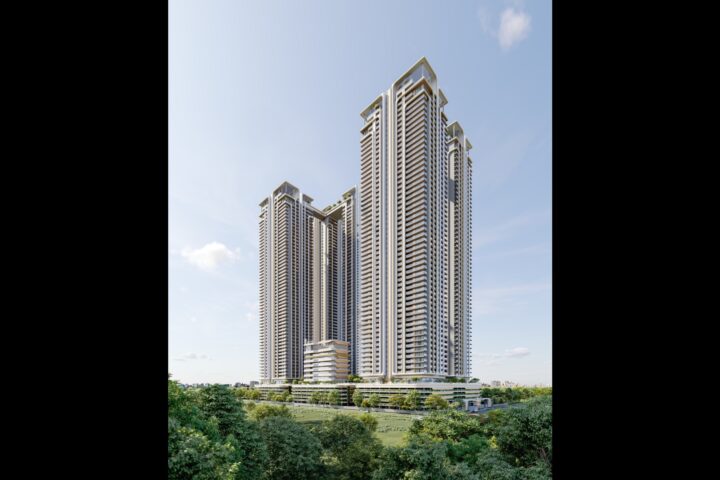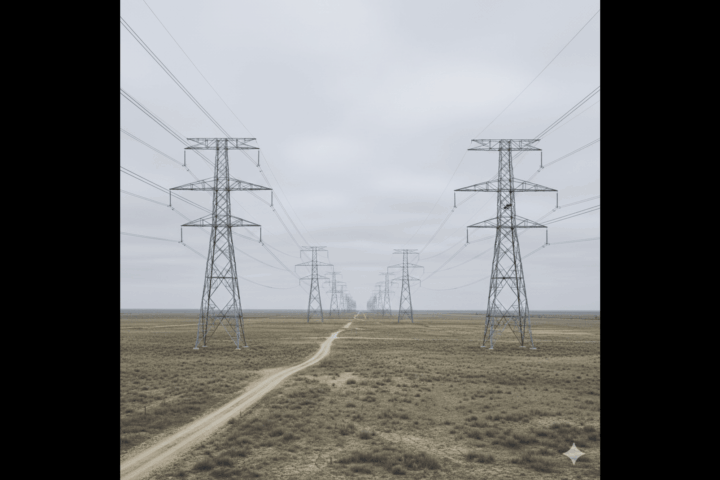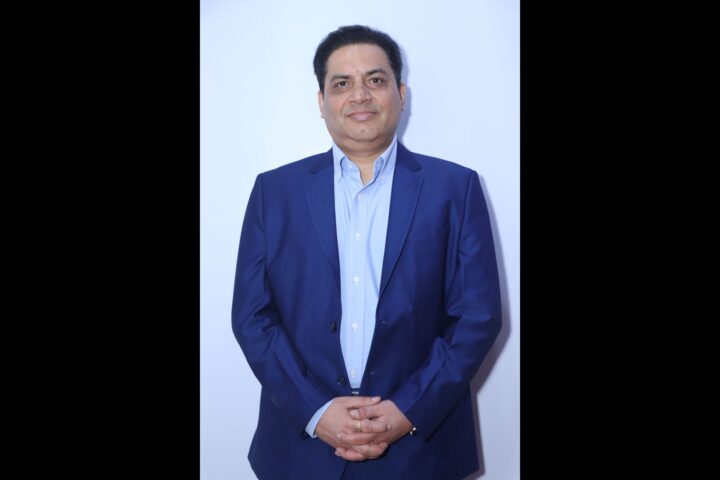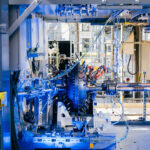As India aspires to become a 5-trillion-dollar economy, stainless steel will play a defining role in building a greener, more resilient future
Sustainability has become a key priority for the steel sector. What are your company’s long-term sustainability goals, and how are you aligning them with global climate targets?
Sustainability is at the heart of our growth strategy. We have adopted a long-term roadmap to achieve Net Zero carbon emissions by 2050, with an interim target of 50% reduction in Scope 1 and 2 emission intensity by FY2035. Our sustainability framework aligns closely with the Paris Agreement, UN Sustainable Development Goals (SDGs), and India’s Nationally Determined Contributions (NDCs). Guided by four strategic pillars – Responsible Governance, Planet Positive, Sustainable Innovation & Supply Chain, and Empowering People & Communities – we integrate ESG principles into every business decision. Through renewable energy adoption, circular material usage, responsible sourcing, and social value creation, we aim to build a climate-resilient, low-carbon stainless steel ecosystem. We are advancing decarbonisation through renewable energy integration, scrap-based production, waste heat recovery, green hydrogen, and digital energy management, supported by the company’s near-term target to cut emissions by 50% by 2035. JSL’s emission reduction efforts led to the avoidance of 3,18,248 tonnes of CO2 equivalent emissions, reinforcing its long-term climate ambition to achieve Net Zero by 2050. By embedding ESG metrics into our governance and investment decisions, JSL aims to build a resilient, low-carbon business model that contributes not only to India’s Net Zero 2070 vision but also to global climate action goals.
Stainless Steelmaking is energy-intensive and carbon-heavy. What steps are you taking to reduce carbon emissions — such as adopting electric arc furnaces, waste heat recovery systems, green hydrogen, or carbon capture technologies?
We recognize the need to decarbonize one of the most energy intensive and carbon heavy industries. At our Jajpur facility, we have established Odisha’s largest 30 MWp captive solar plant and commissioned India’s first green hydrogen plant in the stainless steel sector at the Hisar unit, with a capacity of 90 NM³/hr, reducing ~2,700 tonnes of CO₂e annually. The feasibility study is underway for an additional 1,000 NM³/hr green hydrogen projectat the Jajpur unit, with potential CO₂e reduction of ~19,044 tonnes annually. Our production process is inherently low-carbon, driven by Electric Arc Furnace (EAF) technology, which enables the use of 72% scrap-based input, significantly cutting emissions. We have commissioned Waste Heat Recovery Boilers (WHRBs) that generate over 1.61 lakh MT of steam annually, saving about 26,700 tonnes of coal equivalent and results in an annual reduction of 44,498 metric tons of CO2 emissions. We are also exploring carbon capture and storage (CCS) and biomass fuel substitution as part of our decarbonisation roadmap, aligning with long term Net Zero goals by 2050.
How is your company working to transition towards renewable energy sources in stainless steel production?
Renewable energy transition is one of our highest priorities. In FY25, 26% of our total power consumption was met through renewable sources, primarily solar. JSL is securing direct Power Purchase Agreements to increase its proportion of green electricity, 2 Power Purchase Agreements (PPA) of guaranteed 100 MWp power delivery each at the Jajpur and Hisar sites. The 30 MWp solar project at Jajpur, complemented by rooftop and floating solar installations, generates 44.3 million units of clean electricity annually, offsetting over 32,000 tonnes of CO₂. We have also signed Power Purchase Agreements for an additional 11 MWp of green power through JSL Super Steel. Additionally, we are actively exploring ways to expand the use of biomass as a carbon-neutral fuel across our operations – an important step in decarbonising industrial energy use. We are also investing in Waste Heat Recovery Boilers (WHRBs), which convert process heat into reusable energy, and exploring hybrid solar-wind systems and green hydrogen integration to further decarbonise our energy mix.
Stainless steel is 100% recyclable. How is your company integrating recycling and scrap usage into your production to build a circular economy?
For Jindal Stainless, circularity is not just a sustainability goal but foundation of our business model. Stainless steel is inherently 100% recyclable, and JSL has designed its production process around Electric Arc Furnace (EAF) technology, which enables large-scale use of recycled scrap as the primary raw material. Currently, over 72% of JSL’s total metallic input comes from scrap and revert materials, making it one of the most resource-efficient and low-carbon stainless steel producers globally. By maximizing scrap usage, we significantly reduce dependence on virgin raw materials, lower mining-related emissions, and minimize landfill waste. To strengthen this ecosystem, JSL is expanding its scrap sourcing and processing network across India and internationally, ensuring the supply of traceable and high-quality recycled material. We are also investing in advanced scrap segregation and treatment technologies to enhance material recovery and reduce impurities. In addition, by-products such as slag and fly ash are being repurposed for cement and construction applications, and initiatives like Zero Waste to Landfill certification, by-product valorisation, and closed-loop production systems reinforce our vision of a truly circular economy. Through these initiatives, JSL is demonstrating how circular economy principles can be embedded across the value chain – from responsible sourcing and efficient production to by-product valorisation and waste recovery – creating a model of sustainable, closed-loop steelmaking for India’s green future.
What measures have you adopted to reduce water usage, manage slag and other by-products, and minimise waste in your plants?
Our operations are designed on the principles of resource efficiency and Zero Liquid Discharge (ZLD). Both our Hisar and Jajpur facilities operate closed-loop water systems, recycling and reusing over 67% of total water. We have achieved 100% fly ash utilisation and repurposed over 3,08,336.9 MT of ferrochrome slag in cement and road construction applications. Continuous emission monitoring systems (CEMS), advanced dust collectors, and greenbelt development help maintain air quality and biodiversity. These measures reflect our commitment to achieving water neutrality by 2033 and zero waste to landfill by 2030.
The government is planning to implement green-rated steel in central government projects and centrally sponsored schemes starting FY28. How is your company preparing for this transition, and what opportunities or challenges do you foresee in meeting this requirement?
We see this not just as a regulatory requirement but as a strategic opportunity to lead the transition toward low-carbon stainless steel production. Our preparation is both technical and systemic. We’ve already embedded decarbonization into our core operations, with Electric Arc Furnace (EAF)-based production routes that leverage high recycled content, significantly reducing Scope 1 and 2 emissions. Beyond direct emissions, we’re advancing cradle-to-gate product carbon foot printing across key stainless steel grades, incorporating upstream Scope 3 emissions from ferro alloys, energy, and logistics. This level of granularity is essential for credible green steel certification. To support this, we’re upgrading our digital infrastructure to enable accurate traceability of key metrices and emission intensities. We’re also actively engaging with the Ministry of Steel to advocate for a stainless steel-specific taxonomy which accounts for the unique emission profile of ferro alloys and the variability across stainless grades. Without this, the current carbon steel-centric framework risks misrepresenting the environmental performance of stainless steel producers.
The policy shift opens up several opportunities. Green-rated stainless steel will become a premium offering in sectors like infrastructure, railways, and defence. It also enhances our export competitiveness while incentivizing renewable energy integration, and circularity. However, challenges remain. The absence of a tailored taxonomy for stainless steel, the complexity of emissions modelling across grades and scrap ratios, and the need for upstream supply chain alignment especially with ferro alloy producers are hurdles that require coordinated industry and policy action. We are not just preparing for FY28 we’re helping shape it. Through strategic investments, rigorous disclosures, and policy engagement, we aim to ensure that stainless steel is accurately represented and competitively positioned in India’s green steel future.
What role do digitalisation, AI, or IoT play in improving energy efficiency, reducing emissions, and monitoring sustainability in your operations?
Digital transformation is central to our efficiency and sustainability goals. Through Project Pragati: Smart Factory 4.0, we have deployed AI, IoT, and predictive analytics across production lines to monitor real-time energy consumption, equipment performance, and emission levels. Digital twins and advanced process control systems help optimize furnace efficiency and reduce material loss. Our Integrated Energy Management System (ISO 50001 certified) uses data intelligence to track and benchmark performance across plants. We are also leveraging blockchain and cloud-based platforms for traceability in scrap procurement and logistics, ensuring transparency and compliance throughout our value chain. In addition, we have onboarded a dedicated digital enterprise tool, Updapt, to strengthen ESG data management and sustainability reporting. The platform automates data capture, integrates with SAP, and enables GHG accounting across Scopes 1, 2, and 3. It facilitates product carbon footprint assessment, target tracking, and risk evaluation aligned with global standards (ISO, GHG Protocol, BRSR, GRI, TCFD). Updapt also provides real-time dashboards and analytics to drive performance improvement and support JSL’s net-zero and compliance objectives. JSL is also onboarding an Enterprise Value Chain Digitalization Tool to automate ESG assessments across suppliers and customers, ensuring compliance with frameworks such as BRSR, EcoVadis, DJSI, and Sustainalytics. The system will provide real-time monitoring, digital scorecards, and SAP-integrated analytics to enhance transparency, supplier engagement, and sustainable value chain performance.
Looking ahead, how do you see the Indian steel industry balancing growth with sustainability, and what role do you envision your organisation playing in driving this transition?
India’s stainless steel industry is entering a phase of unprecedented growth. With per capita stainless steel consumption rising from about 3.4 kg to over 6 kg by 2030, and demand expected to grow robustly with infrastructure expansion, clean mobility, and renewable energy investments, the sector is poised to play a critical role in building a modern, sustainable India. As India aspires to become a 5-trillion-dollar economy, stainless steel – the most sustainable material among metals – will play a defining role in building a greener, more resilient future. Balancing growth with sustainability will depend on how effectively the industry adopts low-carbon technologies, renewable energy, and circular practices. However, growth must be responsibly balanced with sustainability. The future of Indian steelmaking lies in green technologies, renewable energy integration, and circular material use. We are committed to leading this transformation. Our production process, based on Electric Arc Furnace (EAF) technology, already enables 72% scrap-based input, drastically reducing our carbon footprint. We are scaling our renewable energy portfolio, including large solar and wind hybrid projects, Power Purchase Agreements (PPA) for power delivery and have also commissioned India’s first off-grid green hydrogen plant with a capacity of 90 NM³/hr for the stainless steel sector. We see ourselves as a catalyst in India’s transition to green steel. Our model of producing stainless steel through scrap-based EAF technology, coupled with renewable power integration and green hydrogen, offers a scalable and replicable blueprint for the industry. As India moves toward a 5-trillion-dollar economy, we aim to contribute through sustainable infrastructure materials, community partnerships, and climate leadership – creating value not just for shareholders, but for the planet and future generations. This integrated sustainability roadmap – combining energy transition, circular manufacturing, digital monitoring, and ESG governance, not only positions JSL as a pioneer but also serves as a replicable model for other stainless steel producers. By adopting similar pathways, the broader industry can accelerate decarbonisation, enhance global competitiveness, and collectively contribute to India’s Net Zero 2070 vision.





